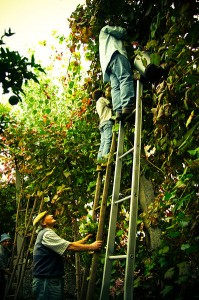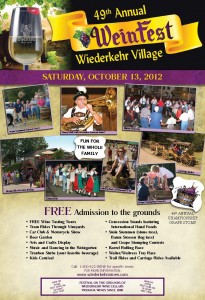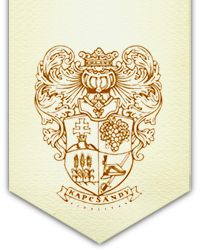by Lorri | Jan 8, 2014 | UnCorked
 Once known only for its Port and notorious Mateus Rose production, today Portugal is changing its image with its own signature grapes. Portugal’s bottled wine exports to the United States topped the 1 million-case mark last year, an increase of more than 30 percent in recent years.
Once known only for its Port and notorious Mateus Rose production, today Portugal is changing its image with its own signature grapes. Portugal’s bottled wine exports to the United States topped the 1 million-case mark last year, an increase of more than 30 percent in recent years.
While many winemakers around the world focused on planting international varietals of cabernet sauvignon, merlot and chardonnay, Portugal stayed true to its roots. Literally. It’s betting its traditional wine making reputation on the powerful indigenous Touriga Nacional and refreshing, distinctive Vinho Verde.
The Touriga Nacional is considered the finest nonsparkling red wine of the Dao and Douro regions, with very little planted outside of Portugal. It’s one of the lead grapes in the blending of Port wine. In the past these wines were made in very concentrated, high-alcohol styles (very similar to a concentrated full-bodied Australian Shiraz). Today many winemakers are moving in the opposite direction with lighter, lower alcohol content, less extraction and more acidity from grapes being grown at higher altitudes.
Because the Touriga Nacional was regarded as only a blending partner for Port, varietal plantings of this grape are relatively new by vine standards. Most vineyards have small plantings and vines as young as 8 to 10 years. Because of the scarcity of old vines, we are still about 10 years away from experiencing the full potential of this indigenous grape.
Vinho Verde is Portugal’s fresh, lively, zingy, zesty and above all bargain-priced wine. These wines are traditionally made from an unfamiliar listing of local grapes like azal, loureiro, arinto and trajadura. Vinho Verde is the largest of the regulated wine regions, stretching from the Spanish border to south of Oporto on the Atlantic coast.
Over the past few years some winemakers are adding albarinho (more familiar to Americans by its Spanish name, albarino) to the mix. With growing familiarity of this wine, more and more consumers are passing over the known white varietals on the retail shelf for Vinho Verde’s refreshing taste and price.
THE VALUE
- 2011 Broadbent Vinho Verde, Portugal (about $9 retail)
THE SPLURGE
- 2010 Cape Roca Fisherman Red (Touriga Nacional blend), Portugal (about $15 retail)
by Lorri | Dec 25, 2013 | UnCorked
 “I drink [Champagne] when I am happy and when I am sad. Sometimes I drink it when I’m alone. When I have company I consider it obligatory. I trifle with it if I’m not hungry and drink it when I am. Otherwise I never touch it unless I’m thirsty.” – Madame Bollinger
“I drink [Champagne] when I am happy and when I am sad. Sometimes I drink it when I’m alone. When I have company I consider it obligatory. I trifle with it if I’m not hungry and drink it when I am. Otherwise I never touch it unless I’m thirsty.” – Madame Bollinger
It may be its romantic history or more simply its splendid taste alluring wine drinkers around the world to raise their glasses at the stroke of midnight on New Year’s Eve. But for all its elegance, Champagne can be a confusing subject.
Champagne is made from a specific combination of grapes grown in France’s cool-climate vineyards. (By law only wine produced in the Champagne region of northeast France can be called Champagne.) Pinot noir gives structure, body and that delicate fruit character; chardonnay is the elegance behind the blend with floral and fruit components; and pinot meunier provides the dominant aspect to the fragrance you find in each glass. Many people ask why Champagne is not red because most of the grapes are red wine grapes. The grapes are pressed, letting the juice run out without skin contact, where color is obtained.
The complex process of producing sparkling wine is the main contributing factor when it comes to the cost of higher-quality bottles. The longer and slower the wine making process, the more expensive and complex the final wine style will be. If you add the bubbles quickly by artificial methods the result is a simple style, while adding them slowly, naturally and elaborately results in a more complex wine and higher price tag.
A Champagne that doesn’t have a specific year on the label is considered “nonvintage” (NV) and means it’s a mixture of grapes from several years. NV is about twothirds of all Champagne sold.
Vintage champagne is produced only in an exceptional year and declared by the producer. This wine is generally more expensive because of its low production and extra time in all areas of the wine making and cellaring process. Blanc de blanc is made from the chardonnay grape. Blanc de noirs are made from pinot noir and pinot meunier grapes. “Brut” is the driest option. “Extra dry” is actually less dry than brut and carries a small amount of sweetness on the palate. “Sec” is slightly sweet; “demi-sec” is moderately sweet; “doux” is sweet and rare.
Bonne annee.
- NV Piper Heidsieck Brut Cuvee, France (about $46 retail)
- 2004 Moet and Chandon Brut Imperial, France (about $95 retail)
by Lorri | Oct 2, 2013 | UnCorked
 Arkansas winery Wiederkehr Wine Cellars is preparing its 50th annual Weinfest, Oct. 12, at Wiederkehr Village near Altus. Locals won’t be the only ones attending the historic event. As many as 3,500 have joined in the fun in the past.
Arkansas winery Wiederkehr Wine Cellars is preparing its 50th annual Weinfest, Oct. 12, at Wiederkehr Village near Altus. Locals won’t be the only ones attending the historic event. As many as 3,500 have joined in the fun in the past.
The long-running festival correlates to the long history of the Wiederkehr family in Altus. In 1880, Johann Andreas Wiederkerhr and his family emigrated from Switzerland. The family chose St. Mary’s Mountain near Altus as their home because of the area’s similarity – mountains (nestled in the Boston Mountains with the Ozarks to the north and the Ouachitas to the south) valleys and ridges – to the grape-growing climates in Europe’s wine regions. The first task was carving a large cellar into the hillside. This unique cellar is now listed on the National Register of Historic Places and is home to the Weinkeller Restaurant. The restaurant features an array of Swiss and European foods but is famous for its spaghetti and Back Hendel Vienna (a chicken dish).
The winery focuses on indigenous grape varieties quite rare in most of the United States. Many of the varieties are unfamiliar to wine drinkers simply because of the unique ability to grow these varieties in Arkansas. Cynthiana, Verdelet and Niagara are just a few making up their portfolio of white, red, sparkling and sweet wines.
If you’re looking to taste the local wines of Arkansas and have a fun family day too, the festival is the place to be. Don’t forget to stick around for the Championship Grape Stomp. There are no tickets or reservations needed because the evening banquet is first-come, first-served, and the entertainment and activities are free. For more information, visit Wiederkehrwines.com or call, (800) 622-9463.
THE VALUE
- 2011 Wiederkehr Wine Cellars Niagara, Arkansas (about $6 retail)
THE SPLURGE
- NV Wiederkehr Wine Cellars Port, Arkansas(about $50 retail)
by Lorri | Sep 25, 2013 | UnCorked
 My most treasured bottles of wine are those about which I know the story behind the label.
My most treasured bottles of wine are those about which I know the story behind the label.
The Kapcsandy Family Winery is one of those stories, making the wines even more distinct and unique each time the cork is pulled. Arkansas was honored to host Lou Kapcsandy and his wife, Bobbie, recently. It was a delight to not only savor their wines but meet them on their first trip to the state. The story is that of an American dream fueled by hard work, determination and follow-through.
After fleeing Hungary after the 1956 Hungarian Revolution, Lou Kapcsandy came to the United States via Austria and eventually settled in the Seattle area. Kapcsandy’s varied career path – he’s been a professional soccer player, an airman in the U.S. Army and a professional football player and has a degree in chemical engineering – helped foster his love of wine.
It was a trip to Bordeaux in 1998 and a love of wine that redirected the couple’s path from wine lovers to wine makers. Over a lunch hosted by Leoville Las Cases patriarch Michel Delon they delved into a conversation about the many vineyards around the world boasting exceptional terroirs. Lou was convinced an American estate could rival them all. And so this challenge set them on a new destiny and planted the seedling of the Kapcsandy family dream.
Lou and Bobbie partnered with their son, Louis Jr., and, much to the family’s surprise, were able to purchase a 20-acre plot inNapa Valley that was once the former Beringer Estates Lane vineyard. The Beringer vines were destroyed in the California phylloxera devastation of the late 1990s. Making this plot home to the Kapcsandy vineyards meant a complete replanting with mostly cabernet sauvignon and merlot.
It was by no means an ordinary replanting but a veritable strategic plan for making the land the pinnacle of American terroir. Today it is apparent in the bottles of the Kapcsandy family wines. But just as his story started with opportunity, Lou Kapcsandy Sr. still says the best is yet to come.
- 2012 Kapcsandy Family Vineyards Rose, California (about $29 retail)
- 2009 Kapcsandy Family Vineyards Endre, California (about $60 retail)
by Lorri | Sep 11, 2013 | UnCorked
I was recently asked an interesting question: Most of us are familiar with great food and wine pairings but is there a list to steer clear of?
Remember, the ideal pairing is when food and wine put together create something even better. But there certainly are food and wine matches that should never show up at the table together.
Dry Champagne and sweet wedding cake: Many assume Champagne fits any wedding celebration. And for simply toasting, it does. But most wedding cakes are very sweet and tend to overpower dry sparkling wine. For enjoying with the cake, the best fit is bubbly with sweetness.
Raw fish and tannic red wines: Possibly one of the most significant mis-matches is a dry tannic red wine with caviar, sushi, oysters, sashimi or even tuna salad. It starts with a texture interaction giving the fish a sandy feel (regardless of the actual texture),which is followed by a clash of flavors. But it gets worse; often this pairing finishes with a metallic or tin can taste that lingers on your tongue. When serving raw fish and caviar, your best bets are white or sparkling wines.
Deer steak with moscato: An equally bad pairing is a robust, strong meat and a light, frothy wine. This type of match doesn’t have a chance to harmonize because of the power of the meat. The best fit would be using the default rule of red meat with red wine.
Heavy high-alcohol wine with extremely spicy food: Another at the top of the misfit list is heavily oaked, high-alcohol red wine with extremely spicy food. In this case the wine and food amplify each other. The high alcohol burns. The spices burn. And together this intensifies and can be almost unbearable, resulting in the flavors of the food getting washed out.
Red wine and vinegar: This pairing can occur unexpectedly and innocently with just a simple splash of vinegar in a sauce to “brighten” the flavor. But the most common culprit is a salad dressed with vinaigrette. When tasting and accessing wine, the smell or taste of vinegar is usually detected as a fault, so putting the two side by side offers some pairing confusion.
by Lorri | Sep 4, 2013 | UnCorked
 In the past few years Moscato has earned a solid spot in the top five white wines being consumed in the United States, becoming even more popular than sauvignon blanc and Riesling. And it looks like it is here to stay. Moscato is one of the fastest growing styles of wine, with sales up 70 percent in a given year.
In the past few years Moscato has earned a solid spot in the top five white wines being consumed in the United States, becoming even more popular than sauvignon blanc and Riesling. And it looks like it is here to stay. Moscato is one of the fastest growing styles of wine, with sales up 70 percent in a given year.
Moscato is made from the Muscat family of white grapes. Italy’s Piedmont region is one of the homes to this wine style, Moscato d’Asti. If you’re thinking a frothy, fizzy, fairly neutral wine, you may be thinking of its cousin, Asti Spumante. Sadly, many confuse Moscato d’Asti with Asti Spumante, which is produced in the same region with the same grape, the moscato bianco.
In the past, when the trendy demand for Asti skyrocketed, the Piedmont area produced millions of bottles of this fizzy, easy-drinking style of wine, more than 80 million bottles a year. But as with most trends, the demand dropped off as the world moved onto another, more fashionable grape. Because of the enormous amount of production and an astounding export volume, Moscato d’Asti became lumped with the cheap, cheerful, sweet Asti, leading consumers to think they were one and the same.
The style of Moscato with which American consumers are enthralled is lightly sparkling, low alcohol (often in the 7 to 8 percent range) and beautifully fruity. So judge for yourself the force of the grape as a companion to food, refreshing on its own, or simply dessert.
THE VALUES
- NV Mezzacorona Moscato, Italy (about $13 retail)
- NV Stella Rosa Moscato, Italy (about $14 retail)
- NV Ecco Domani Moscato, Italy (about $13 retail)
THE SPLURGES
- 2011 Marchesi di Barolo Moscato d’Asti, Italy (about $20 retail)
- NV Marco Negri Moscato d’Asti, Italy (about $20 retail)
 Once known only for its Port and notorious Mateus Rose production, today Portugal is changing its image with its own signature grapes. Portugal’s bottled wine exports to the United States topped the 1 million-case mark last year, an increase of more than 30 percent in recent years.
Once known only for its Port and notorious Mateus Rose production, today Portugal is changing its image with its own signature grapes. Portugal’s bottled wine exports to the United States topped the 1 million-case mark last year, an increase of more than 30 percent in recent years.
 Arkansas winery Wiederkehr Wine Cellars is preparing its 50th annual Weinfest, Oct. 12, at Wiederkehr Village near Altus. Locals won’t be the only ones attending the historic event. As many as 3,500 have joined in the fun in the past.
Arkansas winery Wiederkehr Wine Cellars is preparing its 50th annual Weinfest, Oct. 12, at Wiederkehr Village near Altus. Locals won’t be the only ones attending the historic event. As many as 3,500 have joined in the fun in the past. My most treasured bottles of wine are those about which I know the story behind the label.
My most treasured bottles of wine are those about which I know the story behind the label. In the past few years Moscato has earned a solid spot in the top five white wines being consumed in the United States, becoming even more popular than sauvignon blanc and Riesling. And it looks like it is here to stay. Moscato is one of the fastest growing styles of wine, with sales up 70 percent in a given year.
In the past few years Moscato has earned a solid spot in the top five white wines being consumed in the United States, becoming even more popular than sauvignon blanc and Riesling. And it looks like it is here to stay. Moscato is one of the fastest growing styles of wine, with sales up 70 percent in a given year.